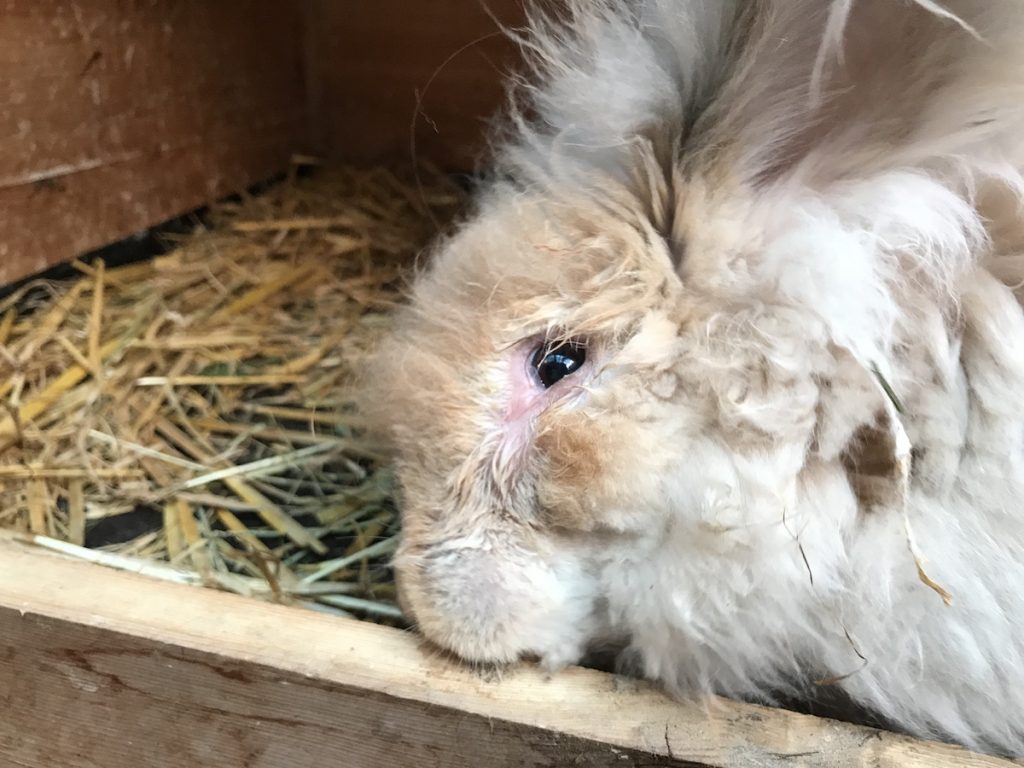
Leaky Faucet
I don’t know if anyone else has noticed, but I find it is only bucks that have stubborn eye problems that refuse to clear up. Well I have found one solution that at least gives temporary relief. You must I’m afraid do the unthinkable – put a buck in with a does and leave them for a time together for a couple of weeks! After a recent clipping binge the temperature plunged – I wanted some babies so I put some pairs together. I figured that they would keep each other warm! The result was – apart I hope from the obvious! – that the bucks with eye problems were cured. How permanent a solution it is I don’t know, I will report in the newsletters. (L.Taylor)
The Tinct. Of Euphrasia is better used at the dilution of 2-4 drops per half a tumbler of cool boiled water, which is double the strength I suggested before. It works better. (Y Hobbs)
Hopalong Cassidy
In the newsletter I told you about the success I’d had with Top Clip foot rot spray for sore hocks, well now I understand it has been withdrawn from the market. There are many different types of spray available the most common containing gentian violet – purple angoras anyone! I also mentioned that sheep dip is supposed to be good – I’d like to stress that if using sheep dip it must be diluted first with water. 5Ml in a gallon of water is the dilution for sheep so you would certainly not want it any stronger for a rabbit! I would dab it on using cotton wool and not dunk the foot. Wash your hands afterwards. (L.Taylor)
Fore sore hocks, the old fashioned Gentian Violet solution in either spirit or water, whichever you can get, painted on with a paint brush and blotted. Wear gloves as it is a very persistent stain to remove from hands. I was given a rabbit last year which the owner had given up on. The back feet were both raw and bleeding, so I tried an old chiropody remedy and it worked so well he has never had a recurrence. I had only to repeat the paint three or four times as the previous coats wore off. The rabbit had been on shavings (an English) not an angora and now I have him on barley straw with no further problems. It is also excellent for treating injuries, although it does make the rabbit un-showable for months. (Y Hobbs)
Gummed up works
I recently purchased an angora rabbit from a person who was giving up, I called him Ben, he was 5 years old.
Mike and I fell in love with his lovely face, maybe we could get a litter before he was too old. Anyway he was rather smelly and dirty around his bits and pieces. I cleaned him, gave him oil and a few tasty bits to eat. Ben seemed cleaner and happier for a week, then he went off his food again, more oil, Ben perked up again so I mated him with two does. Then he started to go off his food again, more oil, still no improvement. Ben got weaker every day, he died about a week before the does were due to have their babies.
Curious to know why he died I arranged for an autopsy, to my surprise we found that he had a fur ball in his tummy, 81/4” long by 2” in width at one end. There was no more room for food.
One doe out of the two performed and I now have a baby sable doe, which I hope will look like Ben. I read in a book recently where they can operate on fur balls, I wish I had known this, I may have saved Ben a lot of misery. The conclusion Mike and I can add is that this smelly, dirty bottom was connected with a large fur ball. (J Ward)
The Collywobbles
Oh, what a lovely word – my boys thought I was swearing the first time I used it! For scouring rabbits live yogurt may help. A tip from a commercial breeder – feed a spoonful of yogurt to a scouring rabbit. Yogurt contains ‘friendly bacteria’. When a rabbit scours it not only looses the harmful bacteria that causes the scouring but also the friendly bacterial that is normally found in the gut. To combat the infection replace the friendly bacteria using live yogurt. I understand the rabbits like it and will take it from a spoon. (L Taylor)
Continual scouring
One of our white does has had a constant problem of being loose and therefore always being messy underneath. Because of the ever present threat of fly-strike we managed to control the problem through the summer by regular feeding of strawberry leaves.
When the Autumn came the supply of leaves ran out so we consulted our vet. He suggested substituting the leaves with “Kaogel”, basically Kaolin, which is an old fashioned method of dealing with the problem. He prescribed 5 mls a day and to see what happened.
We found that five days treatment cleared up the problem completely and it has remained so for about 2 months. We hope that when any reoccurrence shows itself that a repeat of the treatment should work. (S Bayliss)
An article taken from the NAC 1992 Year book entitled ‘Les the Quack’s Column’.